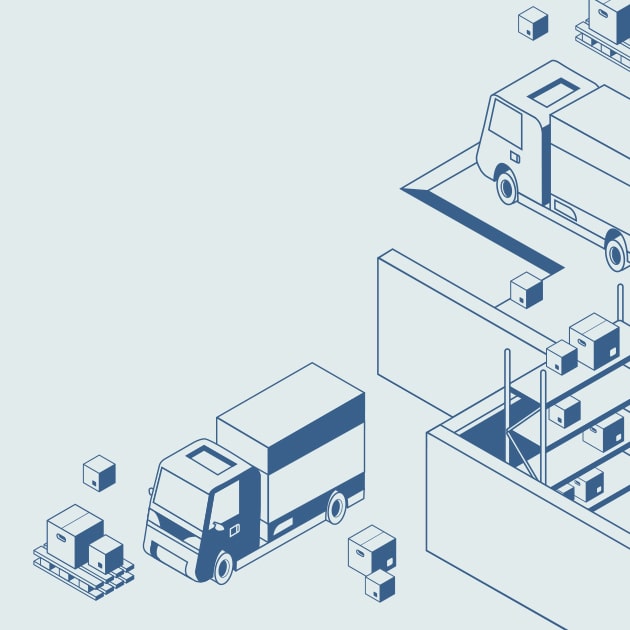
In recent months, companies of all kinds have been forced to reassess the way they operate, adapting quickly to a shifting market. As a result, many shippers are now leveraging innovative tactics and strategies they hadn’t planned on implementing for at least five years.
The current climate has made it clear that change is possible—and often extremely beneficial. To help ensure success into the future, some shipping professionals are now exploring longer-term strategies to make them even more agile and adaptable.
But with so many variables at play, it can be difficult to know how to prioritize. The checklist below can help you get started.
6 Steps to Future-Ready Shipping
Following a few key steps can help shippers ensure success during unprecedented and uncertain times.
Get the Lay of the Land 1
Before implementing any new strategies, identify the areas that represent your biggest markets or where you hold large workforces. Assess how they’ve been affected by recent changes or disruptions, and what recovery may look like going forward.
While you won’t be able to know for sure what the future holds, following a few simple tips can help you plan ahead:
- Consider how much time passed since the disruptions began. This can be measured in various ways, such as reduced public transportation use or decreased consumer spending.
- How long may these areas continue to be affected? This will largely depend on regional regulations, local policies and government response. Be sure to consider the possibility of drops in demand, as well as recessions. Keep track of patterns and changes.
- Think about economic impact. Late payments and credit defaults, for example, can indicate if initial decreases in demand are leading to recession.
- Finally, consider recovery. Keep in mind that some areas have been able to recover their economies better than others, and some will have better levels of preparedness for resurgences. Planning for this in advance can help you keep ahead of competitors.
Understand Your Timelines 2
Evaluate your timelines against critical resources, short- and long-term costs and benefits, and return on investment (ROI).
Consider what new projects are coming down the pike and focus on prioritizing initiatives that will future-proof your business. Try not to launch multiple projects that require the same key resources; this could result in wars over resources and subsequent delays.
Then evaluate potential short- and long-term costs and benefits involved in upcoming work and how COVID-19 may impact them. Will benefits take longer to realize? Will you be spending more upfront than you usually would?
Potential drops in demand, recessions and rebounds in demand should all be taken into account here.
Finally, assess how return on investment may be affected by shifting timelines for different initiatives. Adjust your estimated ROI as needed and create a budget that accounts for everything discussed above.
Gauge Your Bandwidth 3
Next, assess your team’s readiness and ability to respond to both current and near-future circumstances.
Will your staff be able to handle upcoming work? If your team is now remote or will be in the future, will this affect how work is distributed and completed? Create a solid plan for different scenarios, taking into account remote work, the potential for sick employees, reduced ROI, shifting timelines and new safety measures.
A lot will depend on your company culture. Is your team already unified and well-prepared for disruptions, or will you need to reassess the dynamic? Company decision-making will also play a major role here; organizations with speedy, well-organized processes will likely be better prepared.
Plan for the Expected—and the Unexpected 4
As you flesh out your plans for the future, be sure to consider how projects may be impacted by various scenarios. For example, will a resurgence of COVID-19 require a new timeline or different operations? Will team roles need to shift?
Just because regions most relevant to your business are in the recovery stage doesn’t mean you should return to “normal.” Take the time to learn from this experience and identify what you handled well and what you could have done differently. This will help prepare you for future disruptions.
Create detailed plans for what lies ahead, including returns to the office, how remote work could be improved upon, how leadership may need to evolve, how to strengthen connections between employees, and what priorities to focus on.
Don’t Forget Your Customers 5
You’ve likely noticed different customer behavior in the last several months; this may necessitate new or modified products and services. Identify what customers want right now and how you can adjust your supply chain in response.
If a company is seeing increased demand for a certain product, for example, it may want to change inventory planning and warehouse setups for faster fulfillment.
Also consider how customers’ expectations may be changing more generally. In recent years, a lot of focus has been placed on delivery speed—but customers also want more transparency and control.
Recognizing such shifts in mindset can help you better connect with your customers while setting your business apart. As shipping and fulfillment become integral to the customer experience, creating customer-centric processes is more important than ever.
Draw a Line in Pencil 6
Once you have a wide-angle view of what’s needed to help ensure success and have implemented any needed changes, remain flexible. While it’s important to have a well-laid plan in place, it’s just as important to ensure your team is agile and adaptable.
The lessons you’ve learned over the past several months will help guide you as you continue to reassess your business objectives and operations—and you may very well find that they need tweaking and adjusting down the line.
If you run into unexpected roadblocks, use them as an opportunity to identify how you can prevent similar events in the future.
Using the “respond, recover, renew” model can help keep your business nimble:
- Respond — Take the immediate actions needed to keep your team safe and essential business running.
- Recover — Start up business activities again. This may include reopening, rehiring, rebudgeting and resupplying. Then create a detailed plan to get back to a scalable state.
- Renew — Put new operations and strategies into place as needed, using recent findings and patterns to create a foundation for renewal.
Key Takeaway
As COVID-19 continues to alter the state of shipping and logistics, businesses across the country—and across the globe—have been forced to reassess their operations, implementing innovative strategies and tactics to remain competitive and adaptable.
With many shippers now realizing the value of this opportunity for reassessment, some businesses are seeking to flesh out even longer-term strategies to help ensure success.
As you begin laying out your plans for the future, you can refer back to these six steps to help keep you on track.
 search
close
menu
search
close
menu



